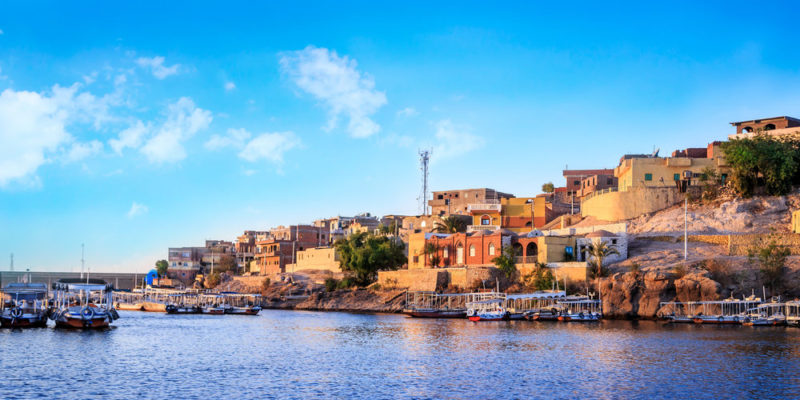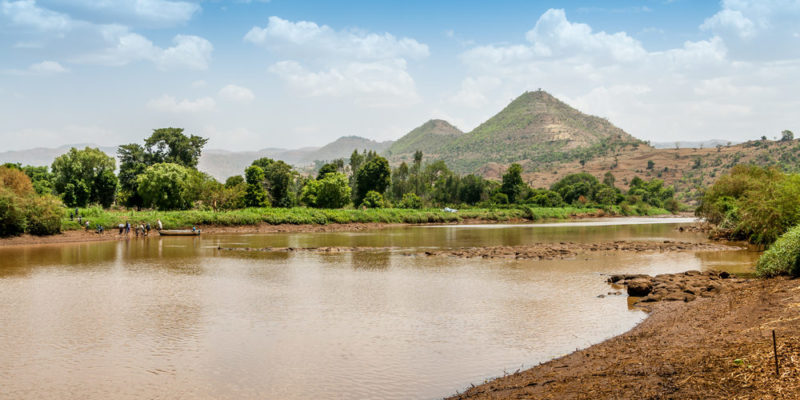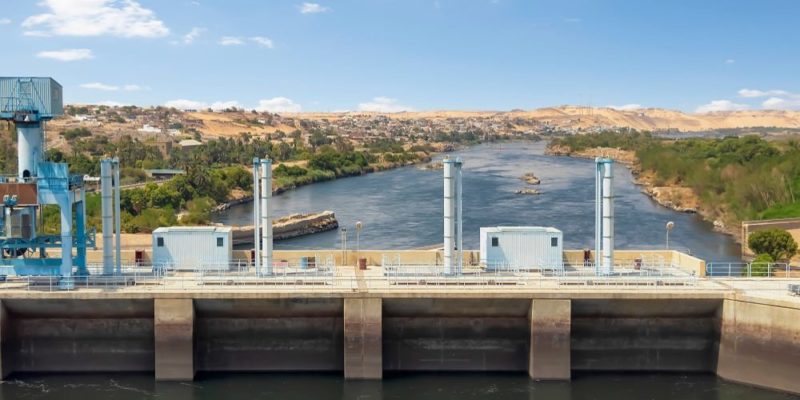We explain what the Nile River is, its history and what its geography is like. Also, what are its general characteristics, flora and fauna.
What is the river Nile?
The Nile or river Nile is called the largest of the watercourses in Africa and one of the longest in the world. It flows through the territory of ten countries and empties into the Mediterranean , in the so-called delta of the Nile. In the latter are the Egyptian cities of Cairo and Alexandria.
The Nile is a famous river, with a notable presence in many accounts of antiquity , not only of the Egyptian Empire that flourished on its banks, but of neighboring cultural ones, such as the Semitic (related in the Bible ). Its name comes from the Arabic 'ni-l which in turn inherits it from the Greek Neilos or from the Semitic root Nahal which means "valley" or "valley of a river".
History of the Nile

Before the formation of the Nile, there were four other rivers that ran from Ethiopia to the Mediterranean.
This was discovered thanks to satellite observations showing these formations during the Miocene period (23 to 5.3 million years BC).
The origin of the current Nile is considered to be much younger by comparison.
It is likely to come from the fracture of a larger basin into small segments . Other versions hold that it has existed since the Tertiary Era (66 million years ago).
Nile location
The Nile is in the eastern region of the African continent . It drains an area of around 3,349,000 square kilometers across ten countries, from south of the equator to the Mediterranean. This means about 10% of the total area of Africa.
Nile dimensions

The Nile was considered the longest river in the world , until the correct measurements of the Amazon River were made in 2008. Its average flow is 2830 m 3 / s and reaches an average depth of 570 meters and a maximum of 1.4 kilometers.
It stretches for 6,853 kilometers in length , crossing the territories of the nations of Uganda, Ethiopia, Tanzania, Rwanda, Burundi, Kenya, Sudan, South Sudan, Eritrea, the Democratic Republic of the Congo and Egypt, flowing in a South- North.
River systems
The Nile River is made up of different river systems or stages:
- The Blue Nile. Located in Ethiopia, it is the most vigorous branch of the Nile, transporting 90% of the water and 96% of the sediment of the entire river.
- The White Nile. Located between Uganda and Kenya, west of Nairobi, it constitutes everything to the arm before Khartoum (Sudan), where it merges with the blue. Its name comes from the whitish clay that can be found in its waters.
- The middle Nile. The area of the river between Khartoum, where white and blue converge, and Aswan, in Egypt, crossing an arid region on the plateau , and finding six waterfalls in its path.
- The Lower Nile. The most fertile region of the Nile, culminating in the delta and the Mediterranean Sea, north of Egypt.
Where is it born in the Nile?

Lake Victoria, between Kenya, Tanzania and Uganda , is commonly thought to be the source of the Nile, as the White Nile departs from there. In its vicinity, in fact, it is known as the Victoria Nile. However, it is much more complicated than that.
In addition to Lake Victoria, one of the main tributaries of the Nile is the Kagera River , between Tanzania and Rwanda, which receives its waters from other rivers in West Africa.
On the other side, likewise, the Blue Nile rises from Lake Tana , in the Ethiopian highlands, as well as from the Tekezé, Atbara, Sobat and smaller rivers, which serve as tributaries. In other words, the Nile has multiple points of birth.
Nile mouth

The terminus of the Nile in the delta takes place in northern Egypt . Thanks to this wide outlet to the sea , there are some of the fertile lands that saw the birth of the Egyptian Empire (c. 1550-1070 BC).
It is one of the largest deltas on the planet, on 230 km of Mediterranean coast , densely populated and extremely fertile, given the sedimentary drag of the river. In its region are the cities of Cairo and Alexandria, two of the most important in the Egyptian nation.
Why is the Nile important?
The historical importance of the Nile has to do with the rise of Ancient Egypt , one of the oldest and most important civilizations. For 3,000 years the Egyptian Empire prospered in the central and lower Nile region, until its conquest and annexation by the Roman Empire in 31 BC. C.
In Ancient Egyptian history, the Nile played a vital role. Its recurrent floods and its river richness guaranteed extra fertile lands that did not require such intense agricultural work.
On the one hand, this allowed them to dedicate themselves to other activities : cultural, military or religious. In addition, the fluvial mobilization made it possible to transport minerals obtained in the desert regions and the easy interconnection of the cities of the Empire.
Flora and Fauna of the Nile

The Nile River basin is home to numerous endogenous species . Biodiversity is especially found in the delta region, as it is bounded by the desert to the south.
Among others, the plants used by the ancient Egyptians for the manufacture of the first papers or papyri ( Cyperus papyrus ) grow in the region. In addition there are various types of bamboo, banana trees and trees as ebony.
In terms of fauna, there are about 129 species of fish in the Nile, of which at least 26 cannot be found in other bodies of water. In addition, it is home to the famous Nile crocodile ( Crocodylus niloticus ) and the Nile monitor ( Varanus niloticus ), and is the spawning ground of the loggerhead turtle ( Caretta caretta ).
Nile economic activities
The Nile floods that fertilized the surrounding regions ended after the construction of the Aswan Dam in 1970. However, agriculture remains the most profitable activity on its banks, as it has been for 5,000 years.
To this must be added the transportation facilities that a river of its size allows , the exploitation of fisheries and other endogenous plant species , and the constant source of fresh water. For all these reasons, the Nile is a natural source of extremely valuable economic resources.
Nile pollution

The fact that almost all Egyptian cities are located around the banks of the Nile, makes it the repository of waste for almost an entire country . The pollution of its waters becomes more concentrated due to the increase in its natural levels of evaporation.
In addition to the loss of water (both by human activities that take water from its channel, as well as by global warming) the construction of the dam in the 20th century . As a consequence, bacteria accumulate and therefore decrease oxygen levels in many parts of the river.
The above content published at Collaborative Research Group is for informational and educational purposes only and has been developed by referring reliable sources and recommendations from technology experts. We do not have any contact with official entities nor do we intend to replace the information that they emit.
Abubakr Conner brings a diverse skill set to our team, and covers everything from analysis to the culture of food and drink. He Believes: "Education is the most powerful weapon that exists to change the world." .
Leave a reply
Your email address will not be published. Required fields are marked *Recent post

Sport: What Is It, Types, Risks, Features, Characteristics and Examples

Dogs: Emergence, Features, Characteristics, Feeding and Breeds

Story: Definition, Elements, Structure, Features and Characteristics

